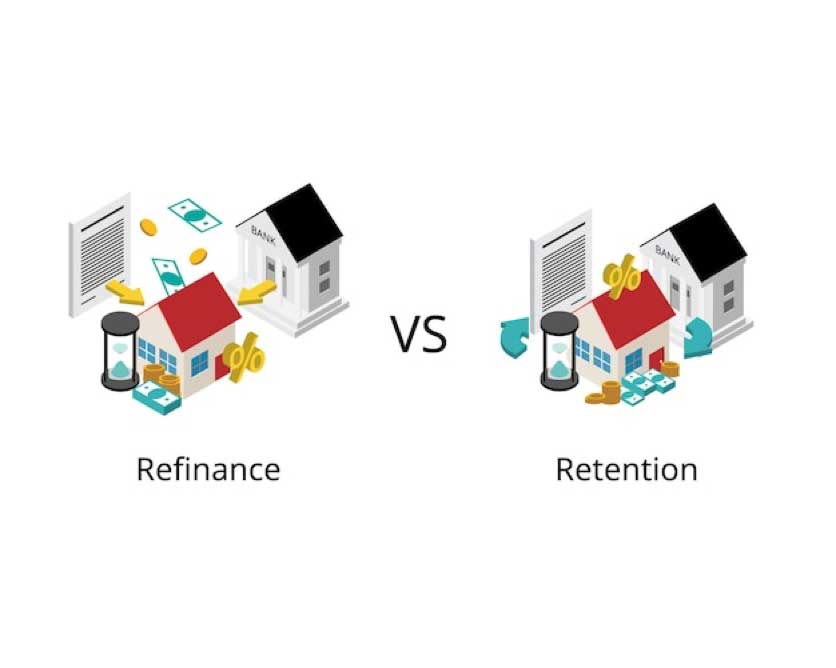In the world of real estate and mortgages, many terms and concepts can seem complex and overwhelming. One such concept that homeowners often come across but may not fully understand is the cash-out refinance. In this comprehensive guide, we’ll delve deep into the process of cash-out refinancing, explaining its benefits, potential drawbacks, and how it compares to other mortgage refinancing options.
What is a Cash-Out Refinance?
A cash-out refinance is a mortgage refinancing option that allows homeowners to tap into their home equity and convert it into cash. This process involves replacing your existing mortgage with a new, larger one. The difference between the old mortgage balance and the new loan amount is then paid out to the homeowner in cash.
When you engage in a cash-out refinance with Mortgage Brokers in Canada like Citadel Mortgages, you’re essentially using your home as collateral for a new loan and some cash. This enables you to gain access to funds for various purposes, ranging from home improvements to debt consolidation.
Key Points to Remember About Cash-Out Refinance
- Cash-out refinance involves replacing your current mortgage with a larger one and getting the difference in cash.
- You’re likely to pay a higher interest rate or more points on a cash-out refinance mortgage compared to a rate-and-term refinance.
- The amount of cash you can receive via cash-out refinancing is based on factors like your property’s loan-to-value (LTV) ratio and your credit profile.
How Does Cash-Out Refinance Work?
The cash-out refinance process begins with finding a lender who’s willing to work with you. The lender then assesses your current mortgage’s terms, the balance needed to pay off the loan, and your credit profile. Based on this underwriting analysis, the lender then makes an offer.
The new loan pays off your existing mortgage, and the remaining cash is given to you. This cash can be used for any purpose you see fit. For instance, it can be used to pay for significant expenses, consolidate debt, or act as an emergency fund.
Remember, cash-out refinance results in lower equity in your home, which means the lender takes on a greater risk. As a result, closing costs, fees, or interest rates can be higher than a standard refinance.
Pros and Cons of Cash-Out Refinance
Before opting for a cash-out refinance, it’s crucial to weigh the pros and cons. On the positive side, a cash-out refinance can help lower your interest rate, offer a substantial amount of money for significant expenses, and potentially improve your credit score if used to pay off debt.
However, there are potential drawbacks as well. These include the possibility of a higher interest rate, the potential need to pay private mortgage insurance (PMI), longer payment periods, and a greater risk of losing your home if you fail to repay the loan.
Cash-Out Refinance Example
To help you better understand how cash-out refinance works, let’s consider a practical example. Let’s say you have a remaining balance of $100,000 on your current mortgage, and your home is currently worth $300,000. This means you have $200,000 in home equity.
If you decide to opt for a cash-out refinance, maintaining at least $60,000 in equity (20% of $300,000), you could potentially cash out up to $140,000. If you choose to take out $130,000 in cash, you’ll refinance the remaining $100,000 on the original mortgage for a new loan amount of $230,000.
Comparing Cash-Out Refinance With Other Options
Cash-Out Refinance vs. Rate-and-Term Refinance
While a cash-out refinance involves taking out a new loan for a higher amount and receiving the difference in cash, a rate-and-term refinance involves replacing your existing mortgage with a new one that offers more favorable terms or a lower interest rate. However, with rate-and-term refinance, there’s no cash payout.
Cash-Out Refinance vs. Home Equity Loan
A cash-out refinance replaces your current mortgage with a larger one, while a home equity loan adds a second mortgage. This means that with a home equity loan, you’ll have two separate creditors, each with a possible claim on your home.
Frequently Asked Questions
- What is home equity?
Home equity is the difference between your home’s market value and any liens against it, like the amount you owe on a mortgage. - How do I calculate home equity?
To calculate your home equity, subtract the mortgage balance owed from the market value of the property. - How can I use the money from a cash-out refinance?
There are no restrictions on how you can use the funds from a cash-out refinance. Many borrowers use the cash to pay for significant expenses, consolidate debt, or as an emergency fund. - Is cash-out refinance the same as refinancing?
No, cash-out refinance is not the same as refinancing. Refinancing involves replacing your current mortgage with a new one, usually to secure a better interest rate or loan terms. On the other hand, cash-out refinance allows you to take out additional funds by borrowing more than your existing mortgage balance, using the equity in your home.
- How does refinancing work with equity?
When you refinance with equity, you’re essentially using the value of your home to secure a new loan. If you have built up equity in your home (the difference between the home’s market value and the outstanding mortgage balance), you can refinance to access that equity. The lender will assess your home’s current value and offer you a loan based on a percentage of that value, allowing you to borrow against the accumulated equity.
- Do you get equity back when you refinance?
Yes, when you refinance, you can get equity back. If your home has appreciated in value or you have paid down a significant portion of your mortgage, you can tap into that equity by refinancing. The new loan will be for a higher amount than your current mortgage, and the difference between the two will be given to you in cash. However, it’s important to carefully consider the financial implications of accessing your equity and consult with a financial advisor or mortgage professional.
- What’s the difference between a cash-out refinance and a reverse mortgage?
A cash-out refinance and a reverse mortgage are two different financial products. In a cash-out refinance, you replace your existing mortgage with a new loan that is larger than your current mortgage balance, and the excess funds are given to you in cash. With a reverse mortgage, on the other hand, homeowners who are 62 years or older can convert a portion of their home equity into loan proceeds, which are paid out to them in various ways such as a lump sum, monthly payments, or a line of credit. Unlike a cash-out refinance, a reverse mortgage does not require monthly mortgage payments and is typically repaid when the homeowner sells the house or passes away.
By now, you should have a better understanding of what a cash-out refinance is and how it works. If you’re considering a cash-out refinance, consider reaching out to Citadel Mortgages, the best Mortgage Brokers in Canada, to help guide you through the process and ensure you’re making the best financial decision for your situation.
Call 1-866-600-8762 today!

Unexpected costs when buying a home in Canada
When buying a home in Canada, there are several unexpected costs that buyers should be aware of to avoid financial surprises. Some of the key

Considering An Early Mortgage Renewal
Why consider renewing your mortgage ahead of time? Well, one big reason is changes in interest rates. If rates drop, jumping on an early renewal

How to get a HELOC on an Investment Property in Canada
To get a Home Equity Line of Credit (HELOC) on an investment property, you need to follow these steps: 1. Know Your Finances: Estimate the

Expert Advice: Buying a House in Cash in Canada
In exploring the possibility of buying a house in cash in Canada, it’s essential to understand the various aspects that come into play. Here’s a

Average Down Payment for a House in Canada
According to the Canadian Real Estate Association, the average house price in Canada hit around $637,673 in August 2022. This means if you’re looking to

Assumable Mortgages: An In-Depth Look
Assumable mortgages are a unique financing alternative that could potentially save you thousands of dollars and simplify the home-buying process. But what exactly are they





